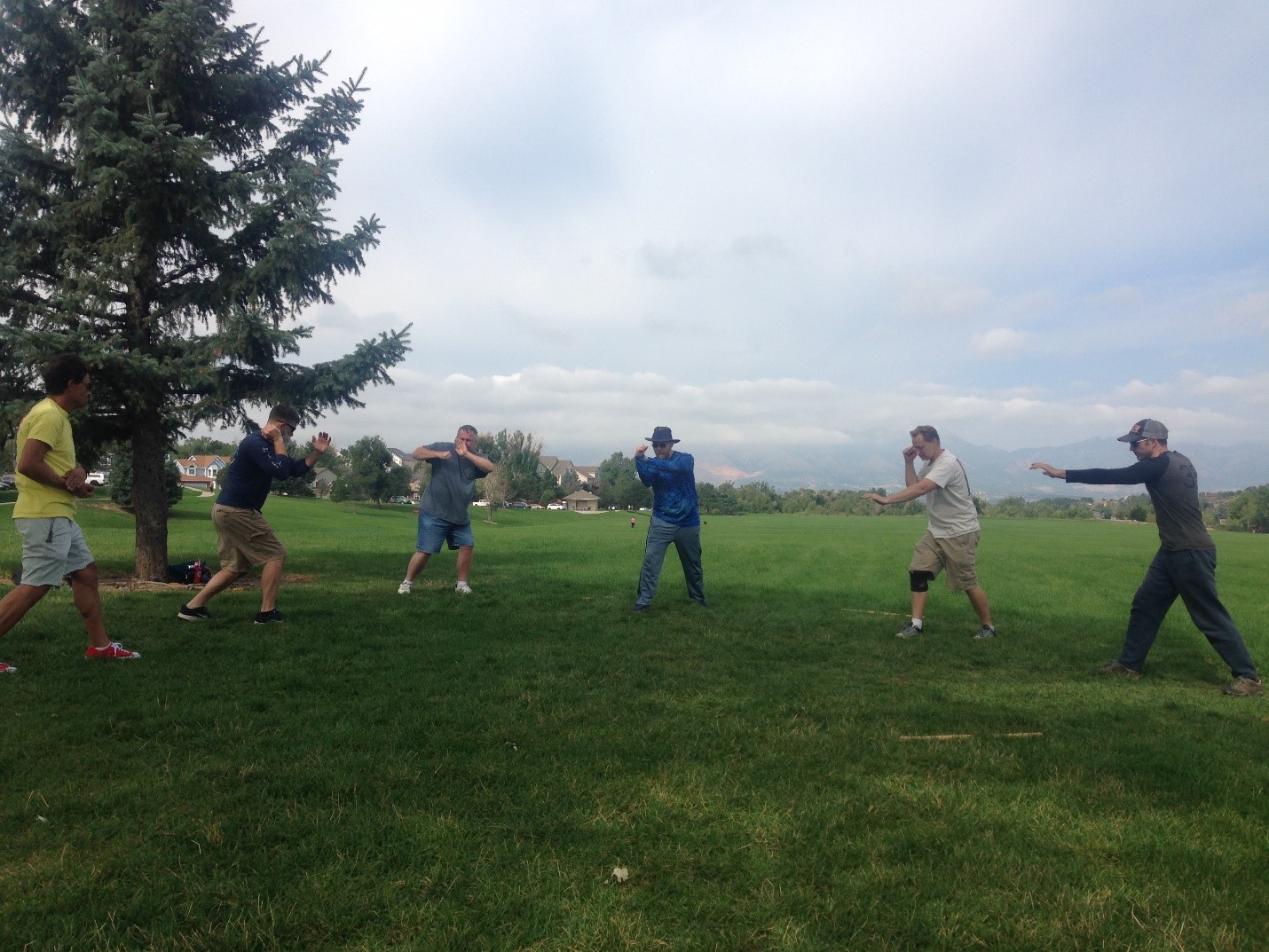Executive Summary:
Read some reasons why training-as-normal should not be done and what are some ways to continue training as a group without taking undue risk.

During the COVID-19 pandemic, many martial art schools are closed, either by state or local order, or by policy of the school administration. The logic is simple. In an environment where interpersonal contact carries the risk of transference of a potentially deadly illness, activities like martial art become very risky to personal and community health.
That is not popular with many students. While some are content to stay home and not take unnecessary risk, others are irritated. Arguments are as follows. “This virus needs to run its course; we all need to catch it eventually so we may as well get it over with.” Less rational, but more common is, “It’s just a matter of time before I catch it. I’m not worried about it. Let’s just train.” Disturbingly, I have heard, “It’s all fake news. You’re afraid for nothing.”
To the last comment, get your head out of the sand. People are indeed dying. Others are permanently affected. Chances are you know someone who has lost someone.
To the others, consider that the virus is not one we might necessarily be afraid of catching, but it is absolutely one we should be afraid of sharing. The danger is that we might be contagious before we know we have it. Look yourself in the mirror and practice telling your close friend, your training partner, that you are sorry that you gave him or her the virus and that their son, daughter, spouse, parent, or friend is in the hospital or in the ground because of it. Practice telling your children you are sorry you brought it home with you and that they will never be completely healthy again because you did. Tell them how sorry you are that you knew better but took the risk anyway. When you are done with that exercise, then go whine to your instructor about how you think you should be training as if there is not risk.
The risk is real. We might get COVID-19 even despite our efforts. However, if we make a proactive effort to protect ourselves and family, we can know we are doing the right thing. Taking unnecessary risks with our own and our families’ health is not right. We wait and pray for a vaccine that might allow us to return to normal without needing the virus to run its course through the entire population and we do what we can to protect our loved ones in the meantime.
A final argument for caution: we all have our personal reasons for training martial arts, but somewhere in the mix of reasons is the desire to be able to protect ourselves and our loved ones if, heaven forbid, we are attacked. How can you insist on training to protect yourself and argue that you do not need to protect yourself in the same breath?
So, training as normal is unwise and is not happening for many schools; what can we do about it? For the time being, the Silat Bledek organization is training out-of-doors at the park, and we are exercising (as well as our self-disciplines can resist) without contact. Out-of-doors along with appropriate distance between people mitigates the risk of contagion through spittle and breath vapor so we can exercise without masks to a certain degree. Many organizations are conducting virtual classes via Internet. A few are training indoors, without contact, and with masks on. The latter might become more attractive as winter approaches.
We all prefer to train execution of skills and technique more than repeating drills, forms, or the other, more abstract elements of our martial art. Where “the rubber meets the road” is the true test and value of our martial training. I will not argue. Since we should not do that, though, we might as well “improve the rubber.”
By necessity, we have an opportunity to work on our internalization of martial elements and principles. It is good practice to do, even if it is not as engaging. Embrace the solo practice while constraints make it the only option. Take the opportunity to work through the details, find the flow, or seek the truth in the movements that our drills and forms encourage.
The forms and drills are in our martial systems for a very good reason. They teach our bodies to move in prescribed ways, in proper form and structure, eventually without the mind to dictate it. If we should ever need our skills in a real combat, there will not be time or opportunity for the mind to run the show. It is simply too slow. We want our bodies to move naturally correctly. That behavior comes from thousands of hours of practice.
Practice your blocks, counter attacks, kicks, strikes, and stance changes against a phantom adversary. Instructors, the phantom can be a great training tool. Use them in your hands-off training sessions to help students recall the techniques even if executing them cannot be practiced genuinely. Focus on promoting flow. Now is a great time to practice eliminating the little pauses we all struggle against as we execute technique that is not fully internalized.
Get creative with your practice. Mess around and play games with your drills. It is not okay to change the traditional art or to practice poorly. It is okay to experiment with the meaning and timing of movements, how they might be used, how many ways they might be applied, or just how to make them feel more free and powerful. Playing with movement is a great way to make solo training more fun and it often leads to discovery and deeper understanding. Take your discoveries to your peers and teachers. Explore them together.
Because of constraints on training, we need to get creative. The environment of the day necessitates that we invent ways to train and grow without interpersonal contact. Eventually, one way or another, it will be practical to train again as we always have. Until then, have the courage to experiment and the serenity to accept that every experiment might not pay off. Make the most of it. In the words of Pendekar Paul de Thouars, “Accept, adapt, and then act.”
We have a crisis in play that makes it unwise to train martial art as we always have. Do not ignore the risks. Do not favor training to protect yourself from a threat that might never occur over protecting yourself and your family from a threat that is very real right now. Instead, find a way to train without interpersonal contact. Focus on the drills and forms that most of us like to gloss over and use this time to internalize the movements. Get creative. Find new ways to train the memory and the body, without making contact. Play with the movements, experiment, and try to let the drills become fun and revealing instead of tiring and boring.
We are martial artists after all, each on a quest to develop the skills to deal with threats and walk away safely. That attitude should guide our actions and keep us moving forward despite the COVID-19 threat. As we say in Silat Bledek, “Onward to my goal, never to fall back.”
Alan Nicol
Colorado Springs, Colorado, U.S.A

